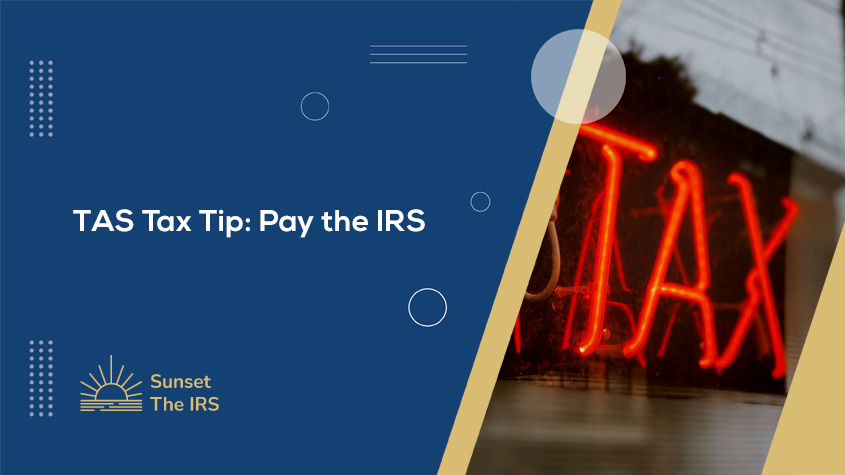
TAS Tax Tip: Paying the IRS:
Taxes must be paid as you earn or receive income throughout the year. The IRS offers a variety of ways to do this. Some of the payment methods include:
Tax Withholding
For employees, tax withholding is the amount of federal income tax withheld from your paycheck. The amount withheld by your employer depends on how much you earn and the information you provide your employer on Form W-4, Employee Withholding Certificate. For help with withholding taxes, use the IRS Withholding Tax Calculator.
Using Your Online Account
Create and/or sign in to your individual IRS online account to pay and view your payment history. You also can:
- View the amount due, including a breakdown by fiscal year;
- See some caveats;
- View 5 years of payment history, including estimated tax payments (if applicable);
- View any pending or scheduled payments;
- Find out about payment plan options and request a new payment plan; Y
- View the details of your payment plan (if you have one).
Download the IRS2Go app on your phone or mobile device
The IRS2Go app can help you find IRS tools and resources faster. You can easily access mobile-optimized payment options, and the app is available in English and Spanish for Android and iOS mobile devices.
Pay directly from your bank account
When looking to pay individual fees at no additional cost, Direct Pay is one option. With Direct Pay you can make a payment directly from your checking or savings account with no registration required and receive immediate confirmation when the payment is made. You can schedule payments up to a year in advance and change or cancel a payment up to two business days before the scheduled payment date.
Send business payments or schedule estimated payments with the Federal Electronic Tax Payment System
The Electronic Federal Tax Payment System (EFTPS) is a free system for businesses, tax professionals, and individuals to make secure tax payments. You must be registered to use EFTPS. It can take up to five days to process your registration, so plan ahead. Visit EFTPS or call EFTPS Customer Service to request an enrollment form:
800-555-4477
877-333-8292 (Federal Agencies)
800-733-4829 (TDD for the deaf)
800-244-4829 (Spanish)
With EFTPS you can schedule payments 24 hours a day, 7 days a week, up to a year in advance, and you'll receive instant confirmation at checkout. You can easily change or cancel scheduled payments and view your payment history for the last 15 months.
With debit card, credit card or digital wallet
This option is available for individuals and companies. The IRS uses third-party payment processors for credit or debit card payments. You can pay online, by phone, or using a digital wallet, such as PayPal or Click to Pay. The IRS does not charge a fee for this service, but payment processors do. Visit IRS Credit or Debit Card Payment Rates to choose the payment processor that offers the best rates for your card type and payment amount. Please note that a maximum number of card payments is allowed depending on the type of tax and the type of payment.
Note: Federal tax deposits from employers cannot be paid by debit or credit card; see how to pay taxes at work.
Other forms of payment
- Same day bank transfer: bank charges may apply.
- Check or Money Order: By US Mail; with or without your return.
- Cash - The easiest way to pay is electronically; however, you can pay in cash. Please review the requirements before doing so.
- Electronic Funds Withdrawal – By submitting your electronic statement, you can schedule the payment for a designated withdrawal date.
Do you need more time to pay?:
To limit the amount of interest and penalties the IRS can charge you, it's in your best interest to pay your tax debt as soon as possible.
However, if you are currently unable to pay your taxes in full, the IRS offers several payment options. Depending on the type of tax you owe and how much, different options are available, ranging from short-term extensions, installment agreements, to offer in compromise. Each option has different requirements and fees, so check it out carefully. Depending on your financial situation, you may qualify to be placed in Currently Unclaimed status.
For more updates from the Taxpayer Advocate service, visit the news and information center to read the latest tax tips, blogs, advisories and more. Our tax advice is also available in Spanish.


